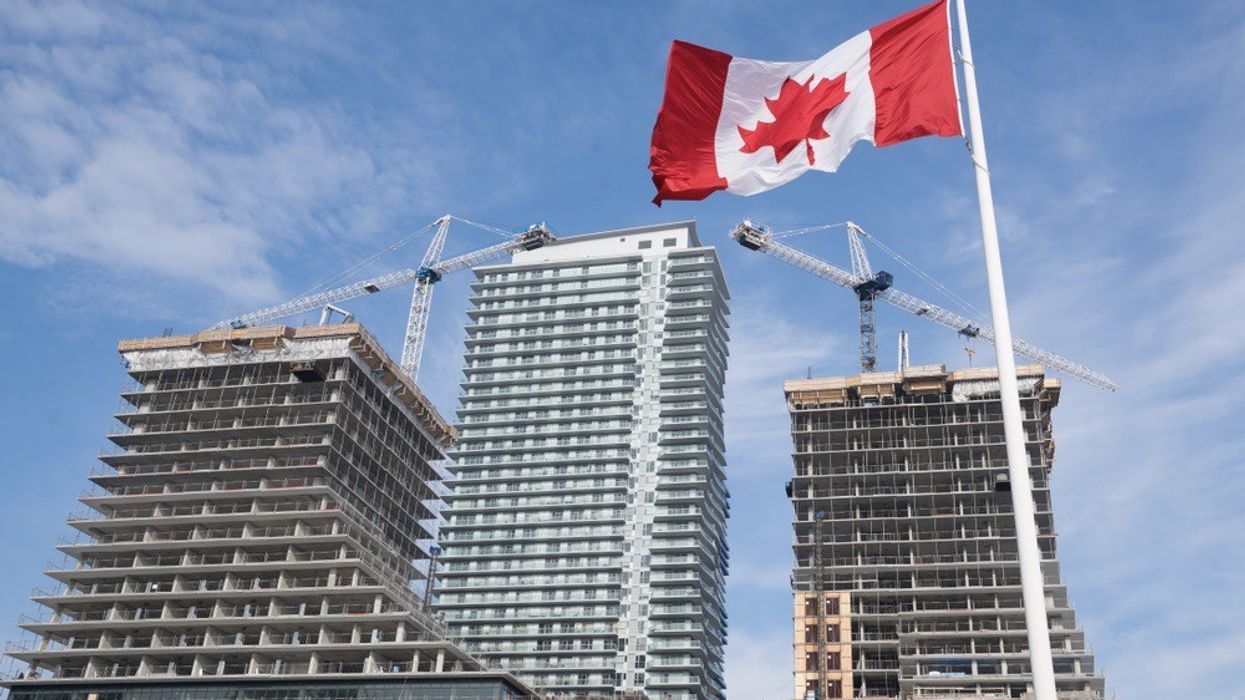Although commercial real estate in Canada is yet to rebound from the pandemic, the sector still spurred notable economic benefits over 2021. On the whole, commercial real estate contributed a net of $148.4B to Canada’s Gross Domestic Product (GDP), created and supported 1M jobs -- 372,710 of which were long-term, salaried positions, otherwise known as “direct jobs” -- and generated $67.5B in labour income for workers. However, of the various commercial asset classes, some had a stronger year than others.
This is according to a report by Altus Group and commissioned by NAIOP Research Foundation to examine the economic benefits of commercial construction across commercial real estate in 2021.
“The pandemic has had asymmetric impacts on the CRE sector. Various asset classes have seen changes in valuations, and some have been repurposed,” the report explains. “For example, the transition to work-from-home and the acceleration of online shopping trends has reduced the value of some classes of office buildings (especially older or “B” and “C” class) and some categories of retail space and raised the value of clean, strategically located industrial distribution centres. Some of these trends may decelerate or reverse over time.
“The total value of commercial real estate transactions increased substantially in 2021 from very poor conditions in 2020. Industrial real estate accounted for the largest share of the investment value of those transactions. Commercial brokerage fees rose modestly in 2021, reflecting the recovery in transactions. Property management, asset management and landlord operations combined represent the largest single component of economic activity within the CRE sector.”
Industrial Construction Continues Pattern of Positive Growth
Canada’s industrial construction sector has observed steady growth not only in 2021, but over the past five years, including over the pandemic. Investment into the sector exceeded $16B in 2021, with the lion’s share of investment, 61%, related to new construction and the remainder related to the renovation and retrofitting of existing buildings.
The report notes that this growth may actually accelerate in the years ahead.
“The demand for industrial space continues to rise, with vacancy rates in many important industrial markets across the country remaining low. Industrial investment in recent years has been fuelled by transformation among many significant industrial users, including the rise of cannabis cultivation since its legalization and more recently the retail sector’s embrace of e-commerce and home delivery, which has spurred demand for additional logistics and distribution centres.
Multi-family Construction on the Rise, on Par With Rental Demand
Institutional investor-grade multi-family construction investment in Canada saw significant growth in 2021, rising to $24.1B.
This is largely attributed to investors accessing CMHC affordable housing incentive financing programs such as the Rental Construction Financing Initiative. Such incentives have served to return financially feasible to the sector for investors by reducing equity requirements and enabling higher loan-to-costs or loan-to-value ratios at below-market interest rates. The report further explains that “this reduces the cost of investment relative to condominium apartment development, which benefits from presale deposits that lower the costs of capital.”
The report goes on to say that growth in the country’s multi-family sector is expected to continue in tandem with rental demand.
“…an acknowledged housing shortage in Canada and the emergence of ‘Gen-Z,’ a large cohort of young people emerging into their prime rental years, will continue to create opportunities for multifamily investors looking to bring new apartment buildings to market. Although the commercial real estate industry faces challenges from the pandemic and slowing economic growth, it promises to continue to be a major contributor to the Canadian economy in the years ahead.”
Office Construction is Down, but Leasing Remains Strong
Although Canada’s office sector declined over the past two years, 2021 still saw a significant construction investment of $12.8B. The bulk of that investment (63%) was put toward new builds, and the remainder (37%) was put towards retrofits/renovations, including upgrades to HVAC systems.
Although investments in the office sector have risen since 2018, the report forecasts that the growth will likely taper off in the next few years as “post-pandemic trends may decrease the need for new office space at the same time as many office users find that adapting their spaces to emerging new working realities requires capital investment.”
With that said, leasing in the sector reportedly remains strong. Of the 17.2M sq. ft under construction across the country, pre-lease agreements account for just under 65%.
“This strong pre-leasing performance, even considering potential uncertainty regarding the amount of space required over the next few years given ongoing pandemic effects, reflects the strong flight-to-quality trends seen in many markets in recent years.”
Retail/Hospitality Construction Continues to Soften
Since reaching a peak in 2019, construction investment in Canada’s hospitality sector has seen downward pressure, falling 16% to $11.8B in 2021. This is certainly not surprising. The sector -- particularly brick-and-mortar retail, hotels, and restaurants -- was disproportionately impacted by the pandemic and is yet to recover.
That said, the report notes a “pent-up demand for in-person shopping experiences,” realized in 2021.
“Many markets across Canada saw a robust return of traffic and spending at brick-and-mortar retail locations, especially regional malls, as pandemic restrictions eased. To the extent that there has been a permanent shift toward e-commerce as a percent of retail sales, retailers are transitioning brick-and-mortar locations to focus on providing consumers with lifestyle shopping experiences, signalling the adaptability of retail to emerging trends and consumer preferences.”
Of the total investments, 55% of the retail investments were into new construction -- “a trend that had been rising and peaked in 2020 with a modest decline in 2021.” This is perhaps reflective of some semblance of positivity amongst investors in the sector.





















